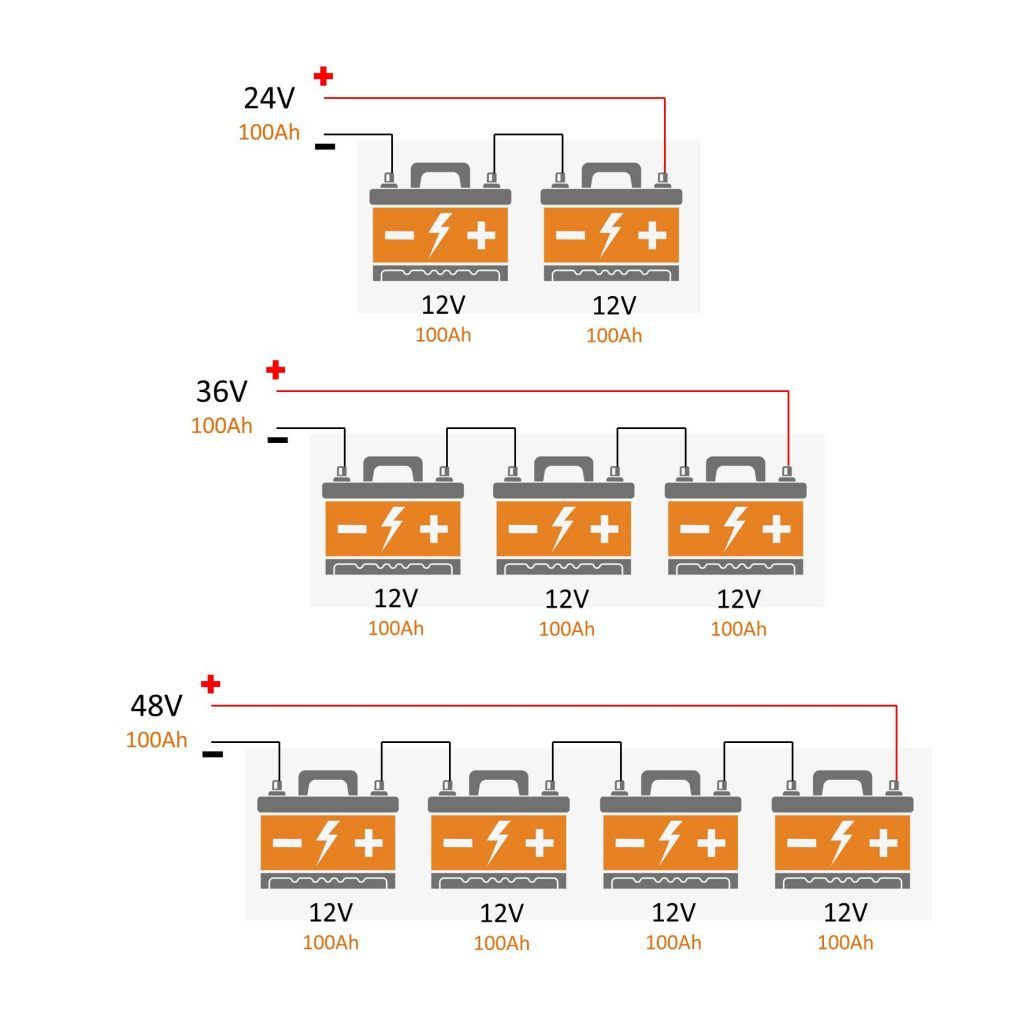
BATTERY STATUS IN SERIES CONNECTION SERIES
Now it’s time to talk about series connections. But it is always important to ensure that you have enough parallel cells to support your load. Even “weak” cells that can’t support much power can be connected in parallel, and a sufficient number of them can power a high-power load. That is how you can create higher power batteries simply by adding more cells in parallel. If we combine three cells in parallel, this three-cell module can support a 15 A load, and so on. By creating this two-cell module, we can now power a 10 A load. If we have two cells in parallel though, we can double the current carrying capacity of the cells. That means that a single cell can power a 5 A load, but it can’t power a larger load or it might overheat. For example, let’s say that these cells we are connecting in parallel can each support 5 amps, or 5 A. The other added benefit of creating parallel groups like these is that they can support more current than the single cells they are made from.

These larger cells are often referred to as parallel modules, parallel groups, or sometimes just “modules” or “groups” for short. So now you understand how parallel connections work and how they create larger battery cells with more capacity. You can see this demonstrated in the diagram below. If you did the same with three cells, you’d create a 10.5 Ah cell. For example, if you use 3.5 Ah cells and you connect two cells in parallel, you’ve created a single 7 Ah cell. The total capacity of the combined cells is equal to the number of cells connected in parallel multiplied by the capacity of each cell. Basically, you are creating one big cell out of several smaller cells. When you connect battery cells in parallel, you increase their capacity. Theoretically, you could connect an infinite number of cells in parallel simply by lining up the cells and connecting all of their positive terminals together and then all of their negative terminals together. The diagram above shows a single cell, two cells connected in parallel and three cells connected in parallel. A parallel connection between battery cells is a connection where all of the positive terminals of the cells are connected together, and all of the negative terminals are also connected together, but separately from the positive terminals.
BATTERY STATUS IN SERIES CONNECTION HOW TO
Once you know how they work, you’ll know exactly how to avoid dangerous scenarios and safely build a battery.

Don’t worry though – parallel and series connections are super simple to understand. If not, you could end up in a dangerous situation of short circuiting battery cells and causing a fire. It is absolutely critical that you understand the difference between parallel and series connections before you begin building your battery. Parallel connections and series connections are the two different orientations for joining battery cells (or any electronics, for that matter).


 0 kommentar(er)
0 kommentar(er)
